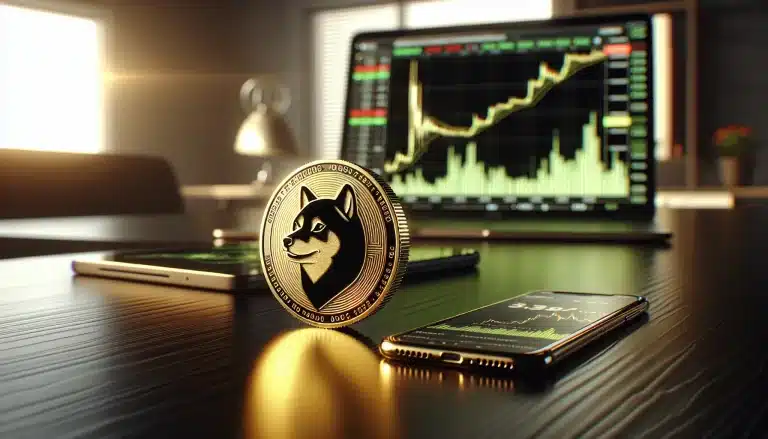Xrp Price Volatility Factors
XRP is a digital asset designed for payments and is the native token of the Ripple blockchain. It has experienced significant price volatility since its launch in 2012. This article will explore the various factors that contribute to XRP’s price volatility. The primary drivers include supply and demand, regulatory environment, market sentiment, market liquidity, technological adoption, network effects, news and events, as well as investor psychology. An analysis of each factor will be conducted to determine how it affects XRP’s price fluctuations over time. Data from reputable sources such as exchanges and industry reports will be used to illustrate this relationship between the chosen factors and XRP’s performance in terms of its volatility index. Further discussion will focus on their implications on investors’ decision-making processes when investing in XRP tokens.
Supply and Demand
The supply and demand of XRP is a major factor that influences its price volatility, as the relationship between the two can determine the currency’s overall value. Speculation trends in the cryptocurrency market have been known to affect the supply and demand balance of XRP, which can lead to large price movements. Similarly, market manipulation by institutional investors or whales has been seen to cause extreme volatility in XRP’s price. These fluctuations are often hard to predict and can result in significant changes in value over short periods of time. As such, it is important for investors to monitor these speculation trends and market manipulations when trading XRP. As these factors continue to impact its price volatility, understanding their influence is crucial for mitigating risk associated with investing in this digital asset.
Moving on from this, another factor contributing to XRP’s volatile nature is its regulatory environment. With stringent regulations across multiple jurisdictions governing cryptocurrency investments, understanding the legal implications associated with investing in XRP is paramount for any investor looking to enter into this space.
Regulatory Environment
Amidst a rapidly-evolving regulatory landscape, the crypto industry faces new challenges. Such challenges can have direct effects on the price volatility of XRP. Speculation and price manipulation can be heavily impacted by changes in the regulatory environment. For instance, recent reports of SEC investigations into certain exchanges could cause investors to sell off their XRP holdings due to uncertainty and fear. This could lead to a decrease in XRP prices as supply increases while demand decreases. Furthermore, restrictions placed on trading by regulatory bodies can also lead to decreased liquidity in XRP markets that may further stifle demand for the asset and affect its price volatility.
Given these potential impacts from regulation, it is essential for those invested in or considering investing in XRP understand how market sentiment towards regulations affects its prices. Understanding this relationship between regulation and market sentiment is critical for any successful investment strategy.
Market Sentiment
| Given the potential ramifications of regulatory changes on XRP markets, it is essential to understand how market sentiment towards regulations can affect prices. Global trends and macroeconomics are both important indicators when determining the degree of volatility in the price of XRP. | Market Sentiment | Effect on Price |
|---|---|---|
| Positive | Increase | |
| Neutral | Minimal Change | |
| Negative | Decrease |
By understanding these trends, investors can be better informed when making decisions. Furthermore, traders may be able to take advantage of any potential swings in the market due to changing sentiments. As a result, a comprehensive look at global and macroeconomic trends is essential for successful trading with XRP. By taking into account market sentiment towards regulations, investors can become more aware of any potential risks or rewards associated with their investments in XRP markets which could lead to better opportunities for success. This transition prepares readers for an exploration into another factor that affects XRP price volatility: market liquidity.
Market Liquidity
Liquidity in the cryptocurrency markets is a key factor that influences price movements. The amount of liquidity available for trading XRP has an effect on its price volatility, as it affects the ease with which traders can buy and sell XRP tokens. There are two primary sources of liquidity for XRP: inter exchange arbitrage and speculative investing. Inter exchange arbitrage involves taking advantage of different prices between exchanges, while speculative investing refers to buying and selling with the expectation of making profits from market movements. Both methods provide liquidity to the market, but may also contribute to increased volatility due to large trades or sudden market moves. Speculative investors often have more influence over short-term pricing than long-term trends due to their ability to quickly enter and exit positions. Overall, the amount of market liquidity available for trading XRP is a major factor affecting its price volatility.
The next step in understanding XRP’s price volatility is examining how technological adoption affects its value.
Technological Adoption
Technological adoption has a significant impact on the value of cryptocurrencies like XRP. The technological infrastructure and blockchain scalability solutions available for XRP are key factors in determining its price volatility. As more crypto infrastructure is developed, it allows for increased scalability, creating an environment that is conducive to greater adoption and usage of XRP. This can lead to increased liquidity in the market, which can drive up demand and ultimately cause fluctuations in the price of XRP. Additionally, as more users become educated about how to use XRP and its associated features, they may be more likely to invest in it due to its potential as a store of value or utility token.
The impact of technology on the value of XRP should not be underestimated; when combined with other factors such as network effects, it can have far-reaching implications for its volatility. By understanding the various technological elements that affect the price movements of cryptocurrencies like XRP, investors can make better decisions about their investments and plan accordingly for future market movements.
Network Effects
The impact of network effects on the value of cryptocurrencies can be profound, with even a small increase in participants having the potential to create massive price movements. Ripple (XRP) is no exception, as its global reach and increasing competitive landscape have resulted in significant volatility in its price.
| Network Effect | Impact on XRP Price | Example |
|---|---|---|
| Global Reach | Increased Demand for XRP | Expanded adoption by financial institutions worldwide |
| Competitive Landscape | Increased Volatility of Prices | High competition from altcoins like Ethereum and Litecoin driving prices up and down quickly |
This network effect has a major influence on the price of XRP, which has become increasingly volatile due to news and events related to cryptocurrency developments.
News and Events
In terms of network effects, Ripple has gradually built up a substantial user base and a robust set of partnerships with traditional financial institutions. This has provided the XRP currency with some degree of stability, however news and events can still act as a driver for price volatility. Crypto-competition and media coverage both play an important role in determining the price of XRP. For example, when Bitcoin starts to make headlines due to significant changes in its value, it often has an effect on the prices of other cryptocurrencies such as XRP. Additionally, when new crypto technologies are released or new coins appear on the market, this can also have an influence on the demand for existing coins like XRP. Finally, positive or negative government regulations related to cryptocurrency trading can also cause changes in investor sentiment that may lead to fluctuations in prices. As such, news and events remain potential sources for XRP price volatility despite larger trends from network effects acting over time. Moving forward into considering investor psychology as another factor influencing XRP’s volatility is necessary to complete this analysis.
Investor Psychology
Investor psychology can be a powerful influencing factor in the value of digital assets like Ripple’s XRP. Speculation trends and investor behavior often impacts price volatility, and XRP is no exception. Through careful analysis of the market conditions, investors can understand how investor sentiment affects the price of XRP.
| To better illustrate this point, a table was created to compare the correlation between XRP’s price swings and investor sentiment over varying periods of time. It shows that when investor sentiment was low, XRP prices were less volatile than when investor sentiment was high. This demonstrates that while news events may have an impact on the short-term pricing movements of XRP, it is ultimately driven by speculation trends and investor behavior which affects its long-term volatility. | Investor Sentiment | Low | High |
|---|---|---|---|
| Price Volatility | Low | High |
Frequently Asked Questions
How can I buy XRP?
Satirically speaking, one should never ‘buy’ anything without first doing proper research. When it comes to trading XRP, one need to understand the nuances of buying tips and strategies to ensure a profitable investment. It is important to understand the market dynamics and evaluate your risk tolerance before making any decisions.
What are the risks associated with investing in XRP?
Investing in XRP involves significant regulation and liquidity risks. Regulatory uncertainty has been a concern for investors, while the cryptocurrency’s limited trading volume may make it difficult to quickly liquidate investments.
How is XRP different from other cryptocurrencies?
"As the saying goes, ‘the devil is in the details’, and this certainly applies to cryptocurrencies. XRP differs from other digital assets in terms of its network infrastructure and liquidity issues. Its decentralized payment system has been designed with a wide range of use cases in mind, allowing for faster and cheaper global payments. Furthermore, its underlying blockchain technology is more efficient than many of its competitors when it comes to scalability and transaction speeds – making it an attractive option for businesses looking for quick solutions.
What are the potential long-term benefits of investing in XRP?
Investing in XRP may result in stable returns and low fees, due to its secure digital ledger technology. Additionally, it has potential to increase liquidity and reduce transaction costs, making it an attractive long-term investment opportunity.
How does the price of XRP compare to other cryptocurrencies?
XRP price has seen significant market trends in comparison to other cryptocurrencies, with its supply dynamics playing an important role. An interesting statistic is that XRP’s market capitalization has increased from $10 billion to over $60 billion in 2020. The data-driven analysis of XRP’s price reveals it is highly volatile and dependent on the cryptocurrency markets.





 Bitcoin
Bitcoin  Ethereum
Ethereum  Tether
Tether  XRP
XRP  USDC
USDC  Wrapped SOL
Wrapped SOL  TRON
TRON  Lido Staked Ether
Lido Staked Ether  Dogecoin
Dogecoin  Figure Heloc
Figure Heloc  Cardano
Cardano  WhiteBIT Coin
WhiteBIT Coin  Bitcoin Cash
Bitcoin Cash  Wrapped stETH
Wrapped stETH  Wrapped Bitcoin
Wrapped Bitcoin  USDS
USDS  Wrapped eETH
Wrapped eETH  Binance Bridged USDT (BNB Smart Chain)
Binance Bridged USDT (BNB Smart Chain)  Chainlink
Chainlink  LEO Token
LEO Token  Zcash
Zcash  Monero
Monero  WETH
WETH  Stellar
Stellar  Coinbase Wrapped BTC
Coinbase Wrapped BTC  Ethena USDe
Ethena USDe  Hyperliquid
Hyperliquid  Litecoin
Litecoin  Canton
Canton  Avalanche
Avalanche  Sui
Sui  Hedera
Hedera  USDT0
USDT0  sUSDS
sUSDS  Dai
Dai  Shiba Inu
Shiba Inu  Toncoin
Toncoin  World Liberty Financial
World Liberty Financial  Uniswap
Uniswap  PayPal USD
PayPal USD  Cronos
Cronos  Ethena Staked USDe
Ethena Staked USDe  USD1
USD1  Mantle
Mantle  Polkadot
Polkadot  Rain
Rain  MemeCore
MemeCore  Bitget Token
Bitget Token